Latin America
Related: About this forumJOYA DE CERN - THE POMPEII OF EL SALVADOR
JOYA DE CERÉN IS A PRE-COLUMBIAN FARMING VILLAGE FROM THE MAYA CLASSIC PERIOD, LOCATED IN THE ZAPOTITÁN VALLEY IN THE LA LIBERTAD DEPARTMENT OF EL SALVADO.
During the eruption of the Loma Caldera volcano around AD 500, pyroclastic material was deposited on the village, virtually entombing the farming community beneath metres of ashfall and debris.
Joya de Cerén was first discovered in the 1970’s during levelling works for a government agricultural project, where archaeologists have since found a total of 18 structures grouped into several compounds that supported a population of around 200 inhabitants.
Ongoing studies have identified civic buildings and plazas, religious buildings for communal festivals and shaman practice, and domestic buildings, with the remainder being associated with agricultural activity.

More:
https://www.heritagedaily.com/2022/02/joya-de-ceren-the-pompeii-of-el-salvador/142807
~ ~ ~
Wikipedia:
Joya de Cerén (Jewel of Cerén in the Spanish language) is an archaeological site in La Libertad
Department, El Salvador, featuring a pre-Columbian Maya farming village. The ancient Maya site of Joya de Cerén is located in the Zapotitán Valley, 36 kilometers northwest of San Salvador, El Salvador.[1] It is often referred to as the "Pompeii of the Americas", in comparison to the famed Ancient Roman ruins.
This site is known for the excellent preservation of a Classic period settlement that was rapidly buried by the ashfall of an eruption of the Loma Caldera around AD 600.[2] The relative abundance of paleoethnobotanical remains recovered at Joya de Cerén in comparison to other ancient Maya archaeological sites make Joya de Cerén particularly significant in the study of everyday life of ancient Maya agricultural communities. Of importance was the discovery of a manioc field, the first instance of manioc cultivation identified at a New World archaeological site.[3] The site was thought to have been settled between AD 200 and AD 600.[1] Joya de Cerén was inscribed on the UNESCO World Heritage List in 1993 for its archeological importance, and is a major tourist attraction in El Salvador.[1][4]
Abandonment of Joya de Cerén
1,400 years before the village was abandoned, the population was estimated to be 200 people.[5] The eruption of the Loma Caldera volcano caused 10 meters of pyroclastic debris to settle over the site.[6][7] The site was remarkably well preserved due to the low temperature of ash and very fast ashfall, a 4 - 8 meter thick layer having blanketed the town in the space of a few hours. The use of plaster casting by archaeologists similar to the one used in Pompeii assisted in their identification of fruiting plants, abundance of beans in storage, and mature maize to predict the eruption happened in August or September.[8]
Guava, agave, cacao, and manioc were some of the major crops to the community.[9] Based on crack patterns observed from the relatively earthquake-resistant wattle-and-daub walls and adobe columns at Joya de Cerén, scholars suggest that an earthquake measuring 4.0 on the Richter scale preceded the eruption, giving residents time to flee the site.[10] Further, possible steamy emissions from the volcano may have alerted residents of the impending danger, but only inferences can be made about what exactly warned them.[11] It is unclear to scholars if the duration of the eruptions lasted a few days or a few weeks.[12] The position of artifacts at the site have led scholars to suggest that the evacuation of Joya de Cerén happened in the early evening: shovels and other agricultural work equipment were found stored near the domestic structures, and fires had been lit in hearths.[13] Also, sleeping mats had not yet been rolled out on the domicile floor.[14] No human remains have been discovered at the ancient Maya site.[15]
. . .

Structure 12
Structure 12 is located 5 meters away from Structure 10 and was defined by a doorway and two lattice windows that directed and restricted traffic inside the structure.[21] Similarly to Structure 10, archaeologists believe Structure 12 was also associated with the performance of religious activities.[21] The storage of miscellaneous female-associated artifacts discovered in the niche of an earthen bench may have been a part of a woman’s supernatural tool kit.[21] The tool kit of ceramic figurines, shell fragments, beans, and antlers has led scholars to infer the building was for the diviner to hold divinatory activities in the back rooms and through a window of the west room.[23]
More:
https://en.wikipedia.org/wiki/Joya_de_Cer%C3%A9n#
~ ~ ~
Do you see anything in common between the unusual design under the chair in structure # 12 at Joya de Cerén, a Mayan site, in El Salvador, Central America, and the abundant design at the Inca archeological site, Chan Chan, in Peru?
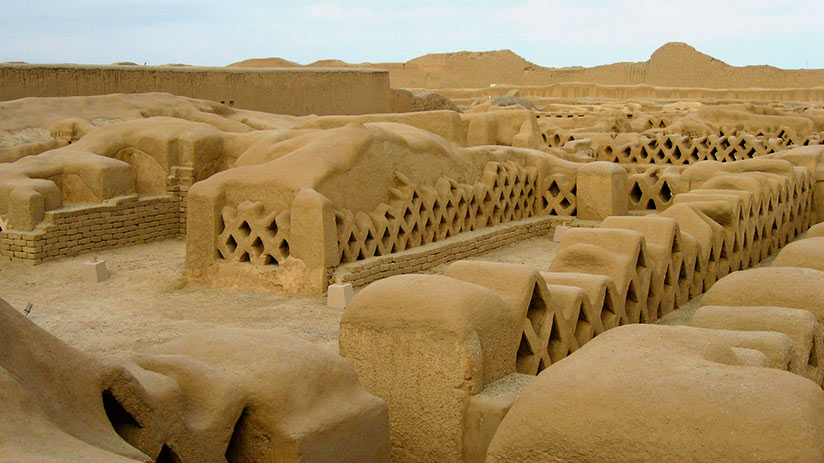
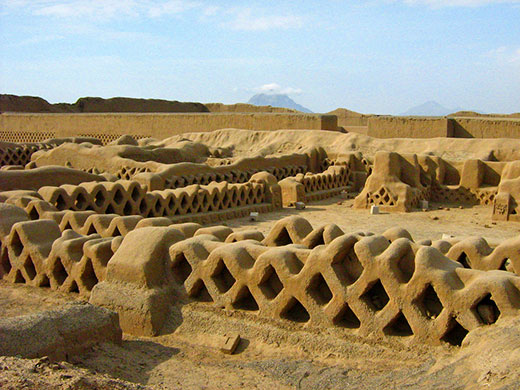

What's that all about?????
Not from the same time periods, and very far from each other. Very strange...
👀👀👀
Judi Lynn
(162,374 posts)Last edited Tue Jun 13, 2023, 12:24 AM - Edit history (1)
Chan Chan was the largest city of the pre-Columbian era in South America.[1] It is now an archaeological site in La Libertad Region 5 kilometres (3.1 mi) west of Trujillo, Peru.[2]
Chan Chan is located in the mouth of the Moche Valley[3] and was the capital of the historical empire of the Chimor from 900 to 1470,[4] when they were defeated and incorporated into the Inca Empire.[5] Chimor, a conquest state,[3] developed from the Chimú culture which established itself along the Peruvian coast around 900 AD.[6]
Chan Chan is in a particularly arid section of the coastal desert of northern Peru.[7] Due to the lack of rain in this area, the major source of nonsalted water for Chan Chan is in the form of rivers carrying surface runoff from the Andes.[4] This runoff allows for control of land and water through irrigation systems.
The city of Chan Chan spanned 20 km² and had a dense urban center of 6 km² which contained extravagant ciudadelas.[3] Ciudadelas were large architectural masterpieces which housed plazas, storerooms, and burial platforms for the royals.[8] The splendor of these ciudadelas suggests their association with the royal class.[8] Housing for the lower classes of Chan Chan's hierarchical society are known as small, irregular agglutinated rooms (SIARs).[8] Because the lower classes were often artisans whose role in the empire was to produce crafts, many of these SIARs were used as workshops.[8]
. . .
History
Chan Chan is believed to have been constructed around 850 AD by the Chimú.[10] It was the Chimor empire capital city with an estimated population of 40,000–60,000 people.[8]
After the Inca conquered the Chimú around 1470 AD, Chan Chan fell into decline.[8] the Incas used a system called the "Mitma system of ethnic dispersion" which separated the chimú civilians into places already recently conquered by the Inca. A little over 60 years later in 1535 AD, Francisco Pizarro founded the Spanish city of Trujillo which pushed Chan Chan further into the shadows.[8] While no longer a teeming capital city, Chan Chan was still well known for its great riches and was consequently looted by the Spaniards.[8] An indication of the great Chimú wealth is seen in a sixteenth-century list of items looted from a burial tomb in Chan Chan; a treasure equivalent to 80,000 pesos of gold was recovered (nearly $5,000,000 US dollars in gold).[8]
In 1969, Michael Moseley and Carol J. Mackey began excavations of Chan Chan; today these excavations continue under the Peruvian Instituto Nacional de Cultura.[10]
More:
https://en.wikipedia.org/wiki/Chan_Chan
~ ~ ~
The Chan Chan complex, still being resurrected and studied:
You just may be amazed at the architecture of all the structures already uncovered at this site. It's astounding, I think, beyond belief! Here's the link to the thumbnails at google images:
https://tinyurl.com/3fhupnk2
~ ~ ~
This is an artist's view of the way Chan Chan may have appeared when it was operational:
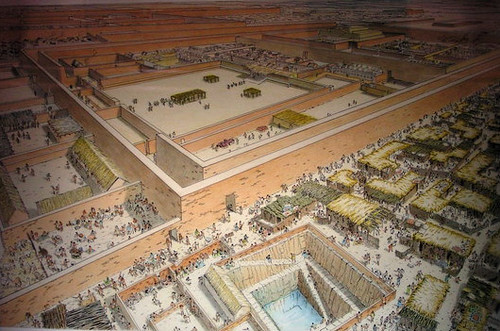
More information and video, interesting:
Judi Lynn
(162,374 posts)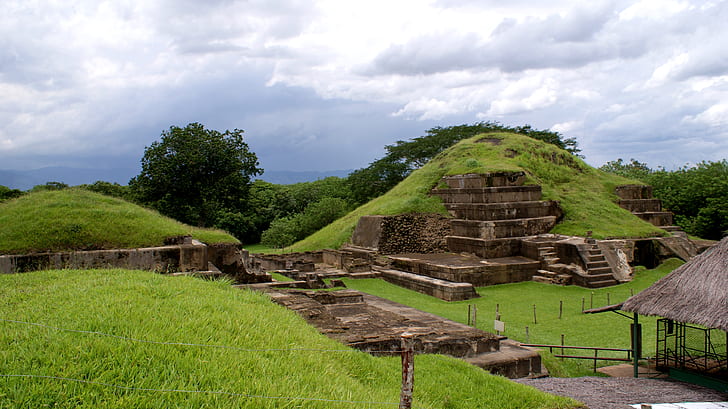
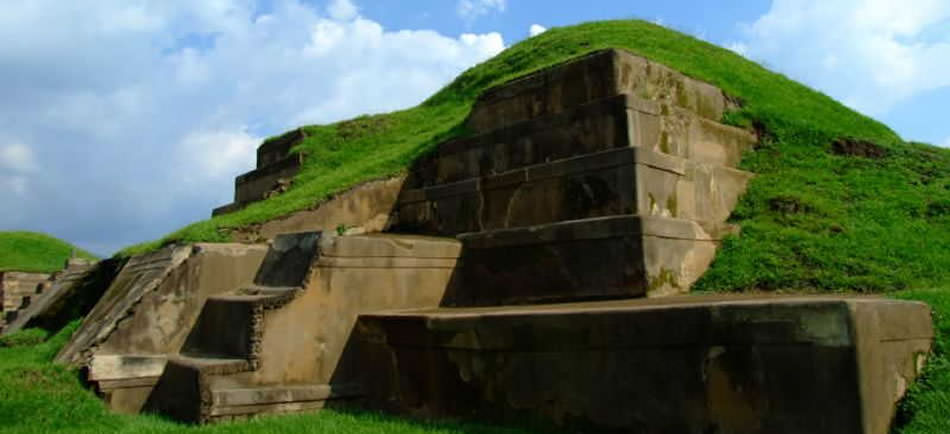

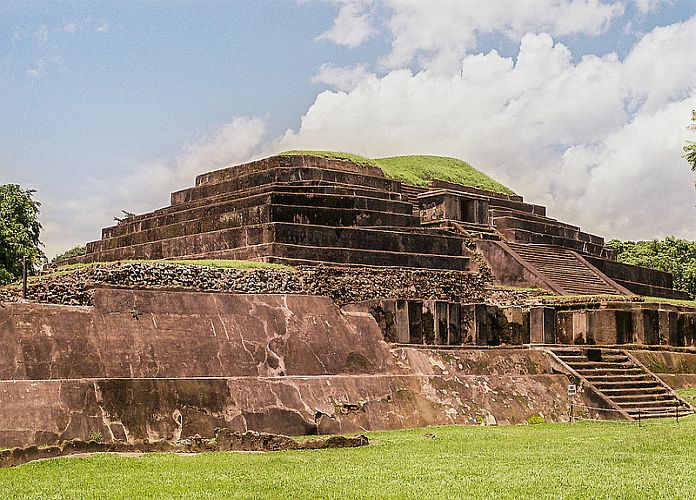
Short video in English:
Joya de Ceren: The American Pompeii
(They had a sweat bath, too, and chocolate and a maize liquor!)